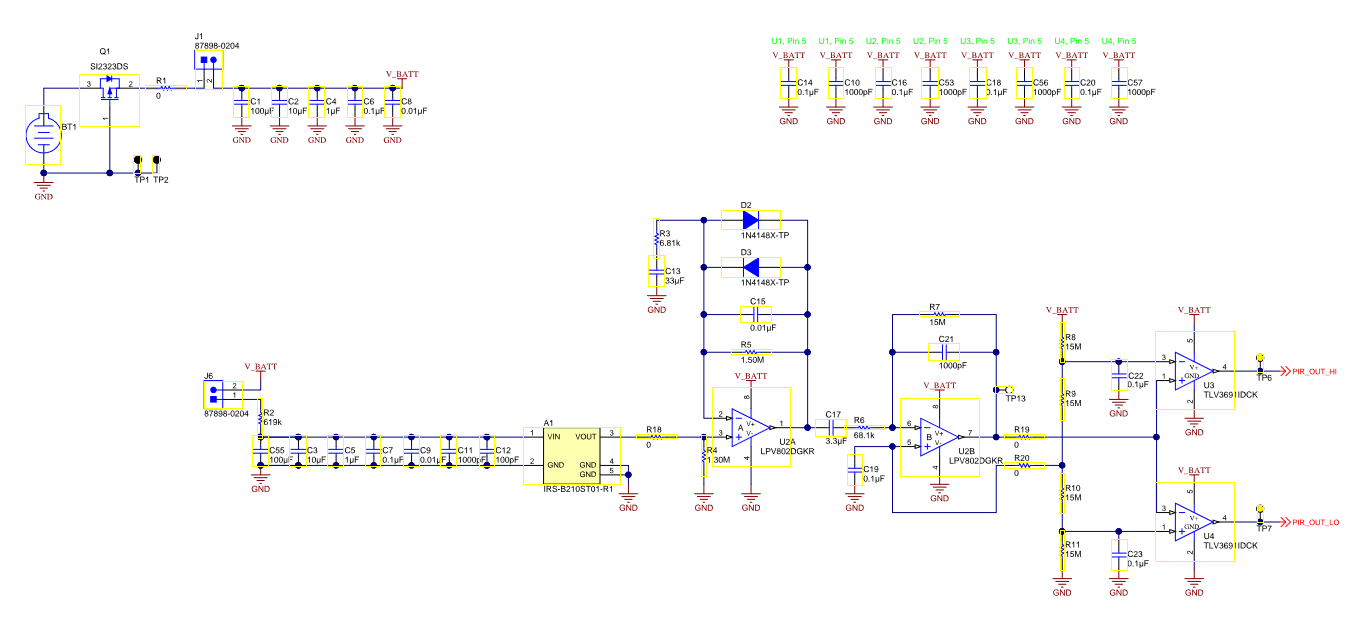Other Parts Discussed in Thread: TIDA-00489
Hi Team
My customer uses the 8544 for the design of the PIR sensor. They use CRxxxx coin cells to power the 8544 and the connective IC. When Connective IC does RF transmission, the high power increases the voltage drop on the internal resistance of the battery and reduces the VCC power supply of TLV8544 and Connective IC. At this time, the entire system is prone to detection error.
Do you ever see this phenomenon? and how to solve this problem.


